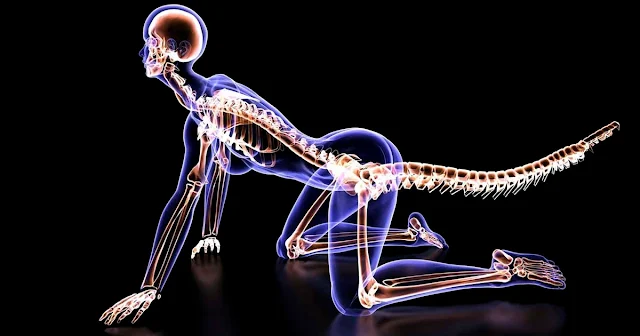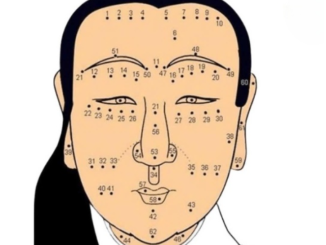One of the most remarkable changes in human evolution is the loss of our tails, a transformation that occurred around 25 million years ago. This pivotal shift not only altered the trajectory of our species but also marked a significant moment in the evolutionary history of primates. While scientists have long speculated on why humans lost their tails, the genetic cause has remained elusive—until now. A recent study published in Nature has finally uncovered the genetic factors responsible for this evolutionary change.

The Quest to Understand Tail Loss
The journey to unravel the mystery of human tail loss began in an unexpected way. Bo Xia, a graduate student at New York University, was inspired to investigate the origins of the human tailbone after injuring his own coccyx. This personal curiosity led Xia and his team to embark on a groundbreaking scientific investigation.
Through careful research, the team focused on the TBXT gene, which plays a crucial role in regulating tail length in various species. Their research revealed a unique genetic mutation within this gene, providing a major breakthrough in understanding human evolution.
The Role of Jumping Genes
A key aspect of this discovery lies in the role of Alu elements, often called “jumping genes.” These genetic elements, specific to primates, can move within the genome and cause significant changes. The researchers found that Alu elements inserted themselves into the TBXT gene, triggering a chain reaction that led to the loss of our tails.
This insertion activated a process known as alternative splicing, where RNA molecules are cut and restructured, which ultimately led to the deletion of a crucial exon. This change altered the structure and function of the resulting protein, leading to the tail loss seen in humans.
Validation Through Mice Studies
To confirm their findings, the researchers engineered laboratory mice with the same genetic mutations found in humans and apes. These genetically altered mice lost their tails, providing compelling evidence that the identified mutation plays a crucial role in the absence of tails in humans and other primates.
However, the study also uncovered a downside to tail loss: an increased risk of neural tube defects, such as spina bifida. This finding highlights the complex balance between evolutionary benefits and potential genetic trade-offs.
The Broader Implications
This discovery has profound implications not just for understanding human evolution, but also for human anatomy and health. The loss of our tails was not a random event but a genetic adaptation with lasting consequences. It illustrates the complex relationship between genetic changes and the way they shape our physiology over time.
As we continue to study our evolutionary past, these findings remind us of the intricate process of natural selection and genetic innovation that has shaped humanity. This breakthrough also underscores the power of scientific inquiry in uncovering the mysteries of our origins, offering insight into the past that can help us understand our future.
The identification of the genetic reasons behind tail loss is a testament to the persistence of scientific exploration and the ongoing quest for knowledge about our evolutionary journey.
I Discovered My Husband Claims I’m His Child’s Caretaker Whom He Keeps Employed Due to Pity — I Enacted My Retribution Shortly Afterwards

When Megan visited her husband’s office with his favorite lunch to surprise him, she learned a startling secret from his receptionist. Megan found out that her husband had been telling everyone she’s merely his kid’s nanny, allowing him to act freely at work.
Recently, I discovered that my husband has been telling everyone that I am merely his child’s nanny, one he keeps out of pity.
What?
It was an ordinary day, and I decided to surprise my husband with lunch from his favorite fast food place. We had both been working long hours lately and had little time to connect.
This was my first visit to Ben’s new office, and I was excited about surprising him.
“Hi, honey,” he said, answering his phone as I parked the car. “I’m just on a call; I’ll be done soon.”
I didn’t really want to talk to him; I just wanted to make sure he was there.

I got out of the car, grabbed the takeout bag, feeling a thrill. When Ben and I were first married, we often surprised each other at work or met up spontaneously.
It was the spark that kept our marriage alive.
Ben’s office was sleek and modern. I walked in, and a friendly receptionist greeted me with a bright smile.
“Good afternoon!” she said. “You’re Mr. Link’s nanny, right? Is something wrong with the kids? Should I buzz him, or do you want to go straight up?”
I nearly dropped the bag of food.
“Excuse me?” I asked, my heart racing.
The receptionist looked puzzled, as if unsure if she’d misspoken or if I hadn’t heard her right.
“Aren’t you Mr. Link’s nanny?” she repeated, her smile fading.
I took a deep breath, trying to process her words.
“No, I’m not the nanny,” I said. “I’m his wife, Mrs. Megan Link.”
Her eyes widened in shock, and she quickly looked around to ensure no one else was listening.
“Oh my God,” she said. “I am so sorry! I had no idea! Please, come with me.”



Leave a Reply